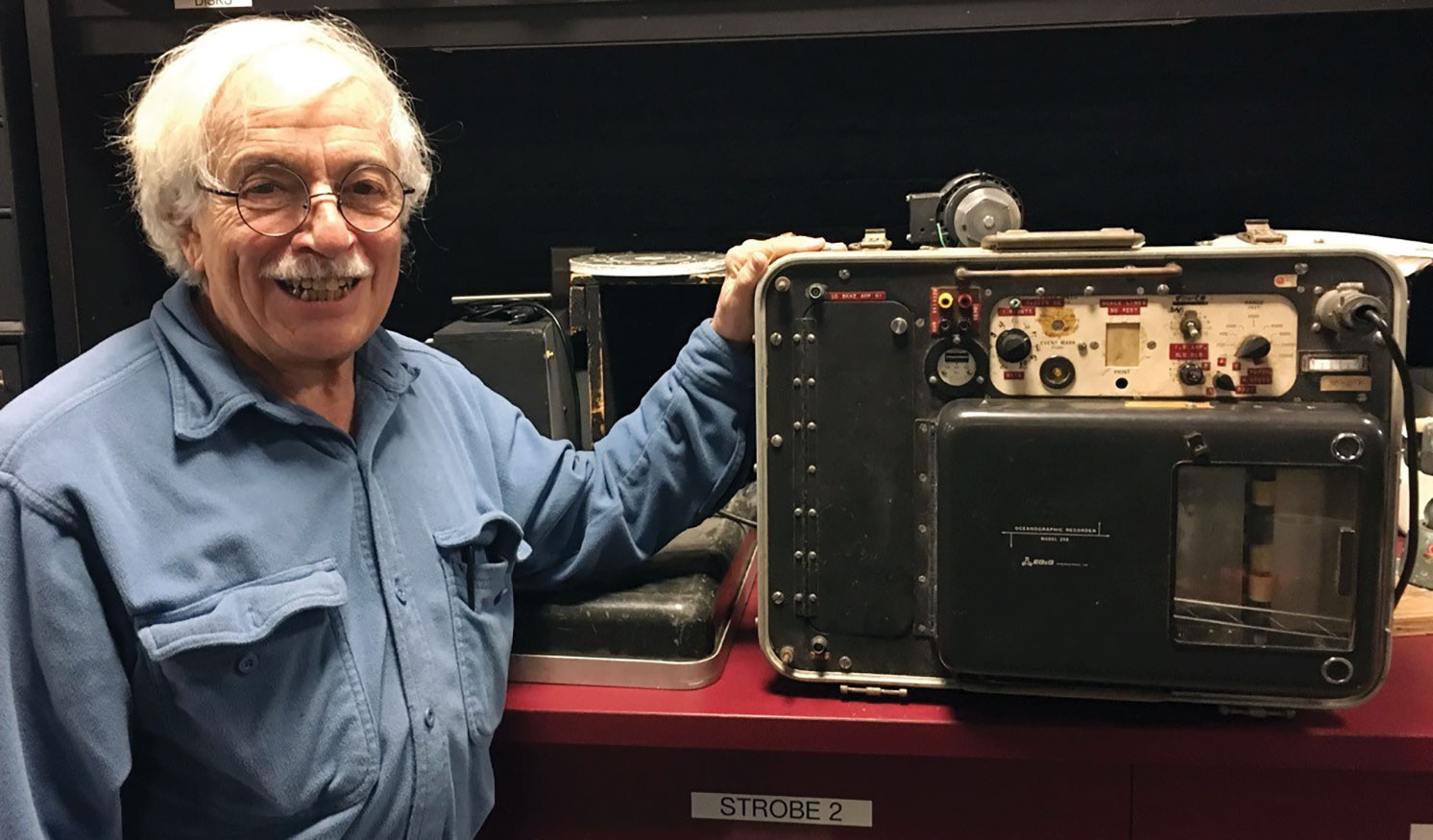
Side-scan sonar, developed by Martin Klein five decades ago, has detected many submerged objects—including mysterious circular stone structures on the bottom of Loch Ness in Scotland. “They were like the stone structures across much of the British Isles, like Stonehenge,” he says. “To this day, I don’t know what the circles are, but they may conceivably be ancient structures.”
Klein’s technology—which uses sound to take pictures of large parts of ocean and lake floors—is renowned for having located the Titanic 12,000 feet deep in the Atlantic 400 miles east of Newfoundland. It also detected the wreckage of the U.S. space shuttle Challenger and downed aircraft including TWA flight 800, Swissair Flight 111, and John F. Kennedy Jr.’s plane. And it can claim pinpointing a Roman shipwreck from 200 BCE off the coast of Turkey, two ships from the War of 1812, and the only existing British Wellington World War II bomber, found in Loch Ness. Today side-scan sonar is widely used by governments, navies, oil companies, and offshore energy companies, and in autonomous underwater vehicles.
The deep sea is an unexpected workplace for Klein. “I had no relationship to the ocean. I grew up in New York City,” he says. At MIT in 1961, the year before he earned a bachelor’s in electrical engineering, Klein visited the lab of Professor Harold “Doc” Edgerton ’27, ScD ’31, to ask about interesting projects. Soon Klein was improving Doc’s mud penetrator and using sonar to explore the bottom of the Charles River.
“That visit changed my life,” says Klein, who worked in Edgerton’s lab after graduation and then joined the professor’s company, Edgerton, Germeshausen & Grier, later EG&G. There he led the team that developed commercial side-scan sonar. Later, he founded Klein Associates and led the development of ocean-search technology across the world.
“MIT was tough. It was hard for me,” he says. “But I feel so grateful. I feel proud of the spirit there. The spirit of making the world better.”
Klein lives in Andover, Massachusetts, and enjoys photography, which he learned from Edgerton. He grows a large collection of bonsai trees; in 2016 he gave 10 trees to Boston’s Arnold Arboretum.
Now retired, he recently donated archives documenting his pioneering work to the MIT Museum. And he established the global Martin Klein MATE Mariner Award to inspire students. Etched on the back of the medal are his favorite words: “Always ask how we can do this better.”
Keep Reading
Most Popular
Large language models can do jaw-dropping things. But nobody knows exactly why.
And that's a problem. Figuring it out is one of the biggest scientific puzzles of our time and a crucial step towards controlling more powerful future models.
How scientists traced a mysterious covid case back to six toilets
When wastewater surveillance turns into a hunt for a single infected individual, the ethics get tricky.
The problem with plug-in hybrids? Their drivers.
Plug-in hybrids are often sold as a transition to EVs, but new data from Europe shows we’re still underestimating the emissions they produce.
Stay connected
Get the latest updates from
MIT Technology Review
Discover special offers, top stories, upcoming events, and more.